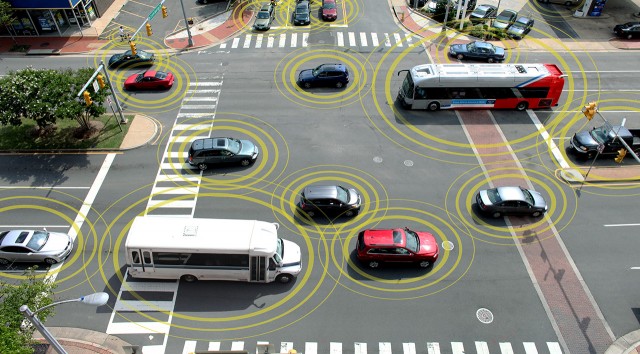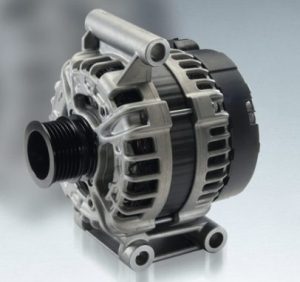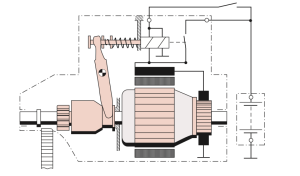Vehicle-to-vehicle communication (V2V) technology is rapidly becoming an important feature in modern cars. With the increasing adoption of connected cars, the ability of vehicles to communicate with each other and with infrastructure systems is becoming a vital aspect of road safety and traffic efficiency. However, with the growing prevalence of car hacking incidents, it is becoming essential to examine the potential security risks associated with V2V communication.
V2V communication refers to the exchange of data between vehicles, allowing them to “talk” to each other about their location, speed, and other information that can help drivers avoid collisions and improve road safety. V2V communication is typically facilitated by wireless communication systems such as Dedicated Short-Range Communications (DSRC) and Cellular Vehicle-to-Everything (C-V2X) technologies.
However, the same wireless communication systems that enable V2V communication can also be exploited by cybercriminals to launch attacks on connected vehicles. Car hacking attacks, such as remote access attacks, can allow attackers to take control of a vehicle’s functions, including steering, braking, and acceleration, putting the lives of passengers and other road users in danger.
One of the most significant risks associated with V2V communication is the potential for rogue messages to be sent to other vehicles on the road. This can be achieved by exploiting vulnerabilities in the V2V communication protocols, allowing attackers to impersonate legitimate vehicles and send fake messages. These messages can be used to deceive other vehicles into taking actions that could result in accidents, such as sudden lane changes or hard braking.
Another potential risk associated with V2V communication is the theft of sensitive data. V2V communication systems transmit a wealth of data, including vehicle identification numbers, location data, and driver behavior data. Hackers could intercept this data and use it for malicious purposes, such as stealing identity information or tracking the movements of specific vehicles.
To mitigate these risks, automakers are implementing a range of security measures to secure V2V communication systems. These measures include encryption of data transmissions, authentication of messages, and the use of secure communication protocols. Automakers are also collaborating with cybersecurity experts to identify and mitigate potential vulnerabilities in V2V communication systems.
In conclusion, while V2V communication technology has the potential to significantly improve road safety and traffic efficiency, it is essential to be aware of the potential security risks associated with this technology. Automakers, regulatory bodies, and cybersecurity experts must work together to implement robust security measures to protect connected vehicles from cyberattacks. As drivers, it is essential to stay informed about car hacking risks and take steps to protect our vehicles from cybercriminals.
More information on the topic of vehicle-to-vehicle communication (V2V) and car hacking.
V2V communication technology is designed to allow vehicles to share data with each other, including information on their position, speed, direction of travel, and more. By sharing this data, vehicles can work together to avoid collisions, coordinate their movements, and optimize traffic flow. This technology can help reduce accidents and improve road safety, which is why it has become an important feature in modern cars.
However, the same wireless communication systems that enable V2V communication can also be exploited by cybercriminals to launch attacks on connected vehicles. Car hacking attacks can take many forms, such as remote access attacks, where attackers gain control of a vehicle’s systems from a remote location. This can allow hackers to take control of critical functions like the steering, braking, or acceleration of a vehicle, putting the safety of passengers and other road users at risk.
Other types of car hacking attacks include denial-of-service (DoS) attacks, which can flood a vehicle’s communication systems with messages, causing the system to crash or stop responding. DoS attacks can be used to disrupt traffic flow or cause accidents by interfering with the communication between vehicles.
There are also risks associated with the theft of sensitive data through V2V communication systems. For example, hackers could intercept data transmitted between vehicles, such as location data, vehicle identification numbers, or driver behavior data, and use it for malicious purposes like tracking the movements of a specific vehicle or stealing identity information.
To address these risks, automakers are implementing a range of security measures to secure V2V communication systems. These measures include encryption of data transmissions, authentication of messages, and the use of secure communication protocols. Automakers are also working with cybersecurity experts to identify and mitigate potential vulnerabilities in V2V communication systems.
Regulatory bodies are also becoming more involved in ensuring the security of connected cars. For example, the National Highway Traffic Safety Administration (NHTSA) in the United States has released guidelines for vehicle cybersecurity, including recommendations for automakers to implement security measures to protect against car hacking attacks.
As a driver, there are also steps you can take to protect yourself from car hacking risks. These include keeping your car’s software up to date, avoiding connecting to unsecured public Wi-Fi networks, and being cautious about downloading software or apps from unknown sources. You should also be aware of the warning signs of a car hacking attack, such as unusual behavior from your car’s systems, and seek assistance from a trusted mechanic or cybersecurity expert if you suspect your car has been hacked.
In conclusion, while V2V communication technology offers many benefits, it is essential to be aware of the potential security risks associated with this technology. Automakers, regulatory bodies, and drivers must work together to implement robust security measures to protect connected vehicles from cyberattacks.
Advantages:
- Improved road safety: V2V communication allows vehicles to share information with each other, such as speed and direction of travel. By knowing the movements of other vehicles on the road, drivers can take evasive action to avoid accidents.
- Enhanced traffic flow: V2V communication can help optimize traffic flow by enabling vehicles to work together to avoid congestion and reduce travel times.
- More efficient driving: With V2V communication, drivers can receive real-time information on the location of other vehicles, road conditions, and other factors that may affect their driving. This can help them make more informed decisions and drive more efficiently.
- Improved fuel economy: By reducing congestion and enabling more efficient driving, V2V communication can help reduce fuel consumption and emissions.
Disadvantages:
- Security risks: V2V communication relies on wireless communication systems, which can be vulnerable to cyberattacks. Car hacking attacks can pose a significant risk to the safety of drivers and passengers, as well as the security of sensitive data transmitted between vehicles.
- Cost: Implementing V2V communication systems in cars can be expensive, both in terms of the hardware and software required, as well as the necessary infrastructure to support the technology.
- Compatibility issues: V2V communication systems require standardized communication protocols to ensure compatibility between different vehicles. This can be a challenge, as automakers may use different communication systems or protocols that are not interoperable.
- Privacy concerns: V2V communication systems transmit a wealth of data, including vehicle identification numbers, location data, and driver behavior data. This can raise concerns about privacy and data security, particularly if this information is intercepted or used for malicious purposes.
In conclusion, while V2V communication technology offers many potential benefits for road safety, traffic efficiency, and driving experience, it is essential to be aware of the potential disadvantages, such as security risks, cost, compatibility issues, and privacy concerns. Automakers, regulatory bodies, and drivers must work together to address these challenges and implement robust security measures to protect connected vehicles from cyberattacks.









